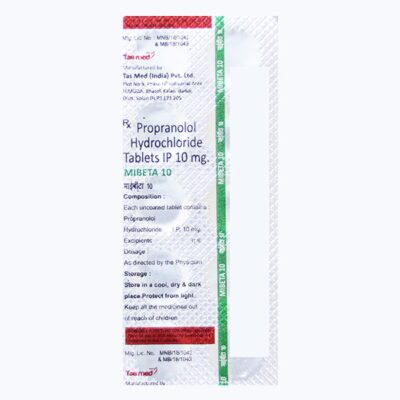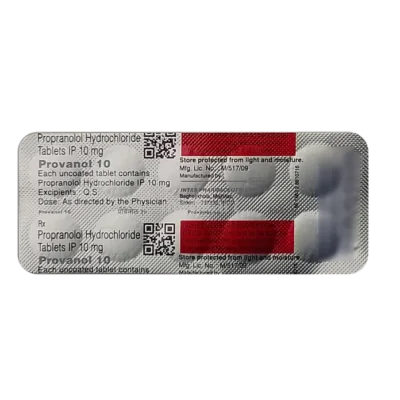💓🧠 Propranolol 10mg Tablet: A Comprehensive Clinical Overview
Propranolol 10mg is a beta-blocker medication widely used to manage cardiovascular conditions, anxiety, and certain neurological disorders. It works by blocking beta-adrenergic receptors in the heart and other parts of the body, reducing the effects of stress hormones like adrenaline. This leads to a decrease in heart rate, blood pressure, and overall cardiac workload.
🔬 Mechanism of Action
Propranolol is a non-selective beta-adrenergic receptor antagonist, meaning it blocks both β1 (heart) and β2 (lungs, blood vessels) receptors. This results in:
-
Slower heart rate (negative chronotropic effect)
-
Reduced force of contraction (negative inotropic effect)
-
Lowered blood pressure
-
Reduced tremors and anxiety symptoms
It also decreases the heart’s oxygen demand, making it effective in managing angina and preventing heart attacks.
📌 Indications and Uses
Propranolol 10mg is prescribed for a range of conditions, including:
🫀 Cardiovascular Uses:
-
Hypertension (high blood pressure)
-
Angina pectoris (chest pain due to reduced blood flow to the heart)
-
Arrhythmias (abnormal heart rhythms)
-
Post-myocardial infarction care (to reduce risk of further heart attacks)
-
Hypertrophic subaortic stenosis
🧠 Neurological & Other Uses:
-
Migraine prophylaxis
-
Essential tremors
-
Anxiety-related physical symptoms (e.g., palpitations, sweating)
-
Thyrotoxicosis symptoms (e.g., fast heart rate)
-
Prevention of bleeding in esophageal varices (in liver cirrhosis)
💊 Dosage and Administration
-
Typical starting dose: 10mg taken 2 to 4 times a day, depending on the condition being treated.
-
For anxiety or performance anxiety, a single 10–40mg dose may be taken about 1 hour before the stressful event.
-
Dosage may be adjusted by the physician based on therapeutic response and patient tolerance.
⚠️ Propranolol should be taken regularly, and not stopped suddenly, as abrupt discontinuation can worsen heart conditions or trigger rebound hypertension.
⚠️ Precautions and Warnings
-
Asthma or chronic lung disease: Propranolol can worsen breathing due to β2-blockade—contraindicated in such cases.
-
Diabetes: It may mask symptoms of low blood sugar (like rapid heart rate).
-
Heart block or bradycardia: Should be used with caution in patients with slow heart rate or conduction disorders.
-
Use cautiously during pregnancy and breastfeeding under medical supervision.
🤒 Side Effects
Common side effects:
-
Fatigue
-
Dizziness or lightheadedness
-
Cold hands and feet
-
Sleep disturbances or vivid dreams
-
Bradycardia (slow heart rate)
Serious but rare:
-
Bronchospasm
-
Depression
-
Heart failure in predisposed patients
-
Worsening of peripheral vascular disease
Seek medical attention for difficulty breathing, fainting, or irregular heartbeat.
🔄 Drug Interactions
-
May interact with:
-
Calcium channel blockers (e.g., verapamil, diltiazem): Risk of heart block or low heart rate
-
Antidiabetic drugs: May mask hypoglycemia symptoms
-
NSAIDs: May reduce antihypertensive effect
-
Other antihypertensives or anti-arrhythmic drugs
-
🧊 Storage
-
Store at room temperature, away from heat and moisture.
-
Keep out of reach of children.
-
Do not use beyond expiry date.
📝 Conclusion
Propranolol 10mg is a versatile and effective beta-blocker used in treating heart, neurological, and stress-related conditions. When taken as prescribed, it provides significant symptom relief and protection against cardiac events. However, its use requires careful medical supervision, especially in patients with respiratory or metabolic conditions.
Note: This information is intended for educational purposes and should not replace professional medical advice. Always consult a healthcare provider for personalized guidance.





Reviews
There are no reviews yet.